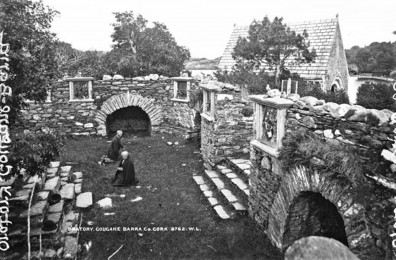Motion:
In light of the recent tragic death of a pedestrian on Parnell Place, that the safety of pedestrians crossing from Merchants Quay to the Bus Station be examined and reconfigured as appropriate with safety barriers etc. (Cllr K McCarthy)
Motion:
In light of the recent tragic death of a pedestrian on Parnell Place, that the safety of pedestrians crossing from Merchants Quay to the Bus Station be examined and reconfigured as appropriate with safety barriers etc. (Cllr K McCarthy)
Recently I had the pleasure of officially launching the new voiceworks studio on the North Mall. Well done to Laoise O’Hanlon and Gemma Sugrue.
VOICEWORKS STUDIO is coming to Cork city!
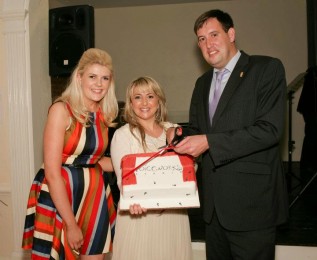
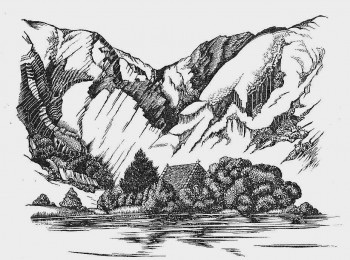
Kieran’s Our City, Our Town Article,
Cork Independent, 24 November 2011
In the Footsteps of St. Finbarre (Part 276)
Gliding on the Willow
With tourism numbers rising and forestry growing, the magic of Gougane Barra continued to capture many writers and painters in the first half of the twentieth century. The Southern Star on 16 April 1949 (p.4), tells of Robert Gibbings (1889-1958), Cork author, artist and lecturer, arriving in Cork from London to begin a new book on the lines of “Lovely is the Lee”, which he wrote some years previously, and which was the “book of the month” in the United States, where half a million copies were sold.
Robert got sidelined in his first River Lee book called Lovely is the Lee (1945). He had intended originally to devote the work to Galway and Connemara waterways but the material eventually was incorporated in a book to which the River Lee gave its name. Arriving back in 1949, Robert Gibbings told a journalist that he would remain at Gougane Barra and would move around south west Cork and West Kerry gathering material for a new book on the region. Hence he purchased a delivery van which he converted into a caravan and in which he lived whilst writing it. For the greater part of the next two years he would live in Ireland, with occasional visits to London. He brought with him the boat, which he used on the Thames when writing “Sweet Thames Run Softly” (1940), for use on the lake at Gougane Barra.
In chapter eighteen of Sweet Cork of Thee (1952), he writes of his boat (p.143):“Early in June, the boat, the willow, arrived…my favourite place on the lake during the day was at its far western end, where behind a screen of rushes I could float unobserved, writing or drawing. There the water was shallow, and looking into it I could see below me the matted leaved of water lobelia. They were already sending up flower stems, and soon their pale lilac blossoms would be as a mist over wide stretches of the lake”.
Robert Gibbings was the son of the Rev Canon Edward Gibbings, Rector of Carrigrohane. Robert attended University College Cork, and later moved to London. He travelled extensively in France, Germany, Italy, West Indies, Australia and the Pacific Islands. After his visit to the latter, Robert wrote “Over the Reefs” (1948). Another of his books at that time to achieve great popularity was “Coming Down the Wye” (1943). Several distinctions came his way in 1938 he was made an M.A. Honoris Causa of the National University of Ireland, and as well as that he gained many medals and certificates from London University and other institutions and exhibitions. In the 1950s he did several broadcasts in the BBC Overseas Service.
On his second book entitled “Sweet Cork of Thee”, a journalist with the Southern Star on 30 June 1951, p.7 noted; “he is concerned almost entirely with Co. Cork, and his friends and adventures during the happy months he spent in his motor caravan, with Gougane Barra as his headquarters. He has a real genius for discovering odd charters and for gaining the confidence of everyone he meets. He can tell a story with a fine economy of words, and his own descriptive writing is as sensitive as his engravings…he shows a superb artistry in his glimpses of lakes and trees, and especially in the exquisite drawings of birds or flowers or fishes, or any other curious object that takes his fancy”.
After two years fieldwork for the second book, an article appeared in the Southern Star on 7 April, 1951 (p.6). A journalist wrote: “A letter from Mr. Robert Gibbings in London tells me that he has just finished the last engraving for his new book, which is to be a sequel to his “Lovely is the Lee”. Many people will remember his protracted visit to County Cork last summer… Most of his books have had titles taken from familiar songs concerning places and rivers. It is scarcely necessary to say that this time he is quoting from Father Prout’s verses on the Shandon Bells: On thee I ponder, where-er I wander, and thus grow fonder, Sweet Cork, of thee”.
In Robert’s obituary in Irish Independent, 21 January, 1958 (p.10), the journalist noted: “Mr. Robert Gibbings, the bearded Irish author and artist, who has died at Long Wittenham, near Abington, Berkshire, U.K. at the age of 68 for a long time occupied a place of distinction among wood-gravers, and for some 10 years, during the boom in fine books, directed the Cockerel Press, which in its day brought out a number of beautifully illustrated editions, laid out and printed with every refinement of taste. He was a moving spirit in the foundation of the Society of Wood Carvers. He claimed to be the first artist to make pencil drawings under the sea when, in Bermuda in 1938, he drew on roughened celluloid sheets 20 feet under water. In 1958, his engravings were in the British Museum and Victoria and Albert Museum…He also designed the first greetings telegrams for the post office.” David Attenborough remembers Robert Gibbings as being one of the inspiring influences at the start of his career.
To be continued…
Captions:
618a. Sketch of Gougane Barra by Robert Gibbings from his book Lovely is the Lee (1945)
618b. Sketch by Robert Gibbings of reeds in Gougane Barra lake from his book Lovely is the Lee (1945)
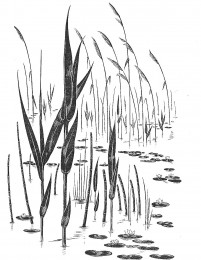
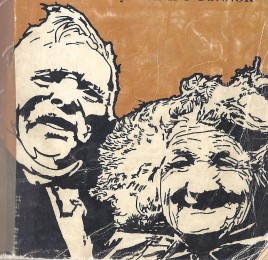
Kieran’s Our City, Our Town,
Cork Independent, 17 November 2011
In the Footsteps of St. Finbarre (Part 275)
The Golden Landscape
Amidst the creation of an afforestation programme for Gougane Barra, the site also began its association with a number of writers, which were mentioned by several people I interviewed during my recent photographic exhibition set-up.
Many visitors to the pilgrimage island mentioned the contribution of the Eric Cross and the story of the Tailor and Ansty. In the Irish Press on 6 September 1980 (p.5), the obituary of Eric Cross is outlined as historian, inventor, sculptor, philosopher, mathematician, teacher and research chemist. Born in Co. Down, Eric Cross spent his childhood there but later moved to the north of England. His father was in the British diplomatic service and his mother, whom he once said had a very great influence on him, had gone to South Africa as a volunteer nurse in 1900.
Eric went to study medicine in Manchester University but after six months he transferred to London where he studied and became a chemist. He spent 15 years as a research chemist in London. He came to live in Ireland in 1936. On his arrival, he renewed an acquaintance with Fr. Tim Traynor, a curate in Sandycove. Fr. Traynor also knew the Tailor in Gougane Barra. In 1939 Eric came to Cork and became part of a group, which included Seamus Murphy, the stone mason and sculptor, Nancy McCarthy, another chemist from Douglas, Captain Seán Feehan, the founder of the Mercier Press and Father Tim Traynor. Gougane Barra was frequented by the group, who were drawn to it by the famous couple Timothy and Ansty Buckley known as the Tailor and Ansty. Later Eric Cross purchased a horse drawn caravan and moved it to Gougane Barra in West Cork.
In an interview in 1976 Eric Cross recalled his first meeting with the Tailor in Gougane Barra. “I was in Cork City and I hired a bicycle and set off, it was a fine summer’s day and by the time I got as far as Gougane Barra it was getting dark. I met the Tailor on the way. He was sitting on the side of the road outside his cottage. He asked me in for a heat of the tea. Something drew me to him, the broadness of the man must have impressed me in some way. It is very hard to put a word on it but I had a sort of feeling that I knew him”.
The Tailor and Ansty was a result of Cross listening many nights to the Tailor’s stories. It was published in 1942, and a hail of condemnation descended on Cross. The book was debated for four days in Seanad Éireann in 1943 after Sir John Keane tabled a motion condemning the censorship board for banning it. When Sir John Keane insisted on quoting from the book, one senator ordered the quotations to be stricken from the record in case “pornographers might get their hands on them and peddle them in the marketplace.”
In a letter to the editor of the Irish Press, published on 15 October 1942 (p.3), Eric Cross defended the book:
“I wrote the book, ‘The Tailor and Ansty’, about a man who has been my friend for many years. The manuscript, before publication, was read by many other friends of the Tailor. When published it was received with gratitude by them and was reviewed enthusiastically by every Irish paper without any exception or objection. Last week the book was placed on the list of banned books by the Board of Censorship. Having stood the test of test of acceptance by the many of who are friends of the Tailor and the Press of Ireland. I must protest against the inference created by this ban-that I have misused the friendship of a great man for the writing of a book ‘the general tendency of which is indecent’. In this I believe that I have the concurrence of opinion of the Tailor’s many friends who would immediately and before publication, have resented such a portrayal”.
In his introduction to the reprint of the book in 1964, Frank O’Connor noted: “Tis a funny state of affairs when you think of it. It is the Tailor himself speaking. The book is nothing but the fun and the talk and the laughter, which has gone on for years around the fireside”. The Tailor and Ansty was the first book, eventually, to be “unbanned” in Ireland.
In 1966, the historian in Eric Cross showed itself when he brought out a “Map of Time”. The map shows at a glance the main events and people of Irish history and their time in relation to European events. In time, Cross went on to write over 200 radio talks for RTE’s Sunday Miscellany and contributed short stories to the BBC. His interest in philosophical and mathematics prompted him to write a number of essays, which were unpublished. In 1978, a book of short stories, “Silence is Golden and Other Stories”, was Cross’s last publication. Eric Cross lived in Cloona Lodge, near Westport, Co. Mayo, the home of the Kelly family for the 27 years leading up to his death in 1980.
To be continued…
Captions:
617a. Depiction of the Tailor and Ansty (source: from a 1985 reprint of the book)
617b. Eric Cross (source: Irish Press)
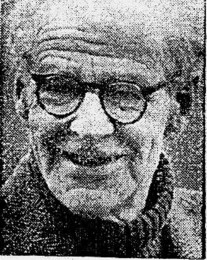
At the outset I would to thank Damien O’Mahony for his work. His work has been excellent in starting a swot analysis on the way forward for tourism in the city.
I think this document opens up alot of rich ideas, which ultimately will involve an enormous investment of money and effort.
I was in Berlin during August; it’s a city with 3.5 million with 15 million tourists each year.
They have produced a book on how to do tourism plus in it they raise a number of interesting queries…on aspects of what tourists are looking for, their movement, their consumerism traits…
Certainly the question of how much do we want to push this is an important question, which arises in that book as well.
Tourism is good for investing tourists but also good to raise questions on how the city feels and looks.
Being one of the guides for some of the tours to the city during the summer, many of the tourists I led around the city commented on the colour and freshness of the city and its landscapes. But many of these tours were whistlestop tours where more often than not they were one hour tours where the emphasis was not on the city but on the locations outside the city like Midleton distillery and its souvenir shop. I brought many of the groups into the city hall space as much as possible and adapted the tour so that the modern element of the city, was also discussed and Cork’s role in the economic development of the region.
Cork has many traits of uniqueness that are unique to Cork and should be promoted as much as possible. The essence of Cork, the promotion of its culture and history needs to stay a central focus. People come here because they want to see here, not traits of another city.
Cork-Kerry Clash:
I think there is a need to start thinking about Cork breaking away from the Cork-Kerry segment. I remain questioning about magazines like Discover Ireland that mentions Cork City and Dingle within a small space of text.
I think it’s time that Cork took the idea of it being of Ireland’s regional gateway centres and build a regional tourism package around it, with Cork City at its heart instead of us building one around Kerry. There is enough tourism in west, north, south and east Cork to centre Cork City as a central focus in the south of Ireland. I think that should become a role of CASP.
Community Engagement:
On the tourism centres planned for Elizabeth Fort and the former craft centre in Shandon they should also build and connect to local communities and build community engagement projects such as that that Cork Community Art link have adapted through the Dragon of Shandon or education strategies such as the Lifetime Lab.
Certainly there is room for educational projects on aspects of Cork’s local history and music. Both could tie in nicely with the former craft centre and Elizabeth Fort.
Signs and Legibility:
On the signs and legibility, I welcome the research part – even though there is a large part of me is saying we should adopt UK methodologies for signage but get maybe our local art schools to design the new signs.
We should build our own ideas and make Cork’s interpretative signage different and unique to us and not to the UK. When people come to Cork, they come for our culture and not London’s culture. Perhaps a competition amongst our Crawford College of Art students and graduates would make for an interesting discussion.
Tourism Plan:
I think a tourism plan is highly important. I also believe that such is the importance of this regional project that it does deserve its own functional committee. I think going forward the five/ six items that are in discussion in this report are worthy of just more than a tag-on on a recreational and amenity strategic policy group.
Items like a bid for Cork to become a UNESCO site of music deserve a proper committee structure. And certainly, the 24 festivals or so that we have on the city need to be critiqued and improved if needs be. We as a City at a national level really need to pull our socks up and get out there more on the national tourism field.
But we have started that process and that I am excited about it.
Question to the City Manager:
To ask the manager about the status (in future planning and completion) of the following derelict properties?
a) The Lodge at the entrance of the IDA Business Park on Model Farm Road.
b) Former Economy Shop & Post Office at Dennehy’s Cross
c) Former Ford Show Rooms at Dennehy’s Cross
d) The two business premises and adjoining bungalow also on Dennehy’s Cross
e) The Crows Nest Bar and adjoining Terrace of houses at Victoria Cross.
f) The Site adjacent to The AIB Bank on Western Road.
(Cllr Kieran McCarthy)
Motions:
That the Council erect signs discouraging the use of Beaumont Quarry as a public dump, Recently at the spot that is directly opposite Cork Constitution Club, plastic bags and all kinds of rubbish are being dumped over the metal barrier that runs along the side of the road (Cllr K McCarthy)
In light of a recent visit to Cork by representatives of the Coventry Irish Centre, that a proposal to develop a simultaneous run concert between the Centre and possibly Christ Church in Cork be investigated by the twinning committee (Cllr K McCarthy)
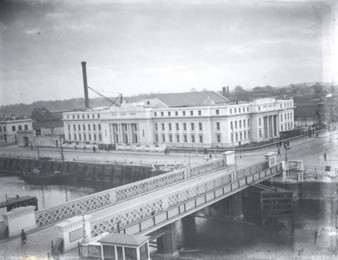

Kieran’s Our City, Our Town Article,
Cork Independent, 10 November 2011
In the Footsteps of St. Finbarre (Part 274)
Memories of Afforestation
There are many well worn spots in Gougane Barra where people stop to photograph the lake, the mountains and the forestry. Indeed, apart from the work of the Irish Tourism Association, another important state supported project in Gougane Barra was that of the Irish Free State Forestry Programme in the late 1930s. Subsequently the forest area became Ireland’s first national park in 1966.
The minutes of Dáil Éireann for the 27 April 1937 record a speech by Gerald Boland Minister of Lands (brother of Harry Boland & a founder member and first chief whip of Fianna Fáil), who noted that “Ireland had been denuded of trees to a greater extent than any other country”. The policy of his Department was to remedy the situation and secure an adequate timber supply for the country at a future date. The programme aimed to be carried out over a number of years and the plan was to plant 10,000 acres yearly.
Prior to 1937, the total area of the new plantations formed by the State was approximately 55,000 acres. The balance of 109,000 acres comprised old woodlands in existence at the time of acquisition, scrub lands not yet cleared for planting, bare land ready for planting, unplantable lands and a number of small areas let in grazing. The total number of Free State forests centres in 1937 was 81, nearly double the number of centres in existence four or five years previously.
About 7,200 acres of forestry were planted in the years 1935-36. However, the Dáil Éireann minutes and an article in the Irish Press on 28 April 1937 highlight that there were a number of factors which had slowed down progress. There was the difficulty of obtaining suitable land in sufficiently large areas and the shortage of skilled forestry officials. Arrangements had been made with the Land Commission for the allotment for forestry purposes of about 6,000 acres and negotiations were pending with private owners for the purchase of 10,500 acres.
Notwithstanding difficulties it was intended to create new centres where possible, and particularly to extend forestry operation in the west and south of the country. The possibility of starting forestry operations in the Gaeltacht received much attention and very considerable areas were inspected. Much of that land obtainable had to be rejected as unsuitable either owing to exposure or to poor soil conditions or to a combination of bother reasons. The search did yield lands suitable for a plantation at Coomroe besides Gougane Barra. It was gradually planted over the ensuing four years. Plantings were largely of Sitka spruce, Lodgepole pine, Japanese larch and some Scots pine. Having reached maturity some of these areas were in time harvested and restocked with a wider variety of species. However, one of the finest stands of Sitka spruce in the country still exists in the valley bottom with trees reaching 38 meters high and carrying a volume of up to 3 cubic meters each.
At the new Free State centres, one of the issues was the length of time to train staff. The majority of the supervisory officers were trained by the State and this was pursued at the Forestry School at Avondale, Co. Wicklow. Provision was also made for further increases to the staff of foresters and foremen, as the work was still hampered by the lack of trained men. The Department had already tried to get suitable men from outside, and the Civil Service Commissioners held open competitions for the purpose. However a sufficient number of qualified candidates were not available. The Department had to, therefore, wait until it had trained its own apprentices.
With the aim to plant 10,000 acres of forestry annually, the State nurseries were enlarged. Hence, in 1937, the amount required for seeds, seedlings and transplants had been reduced from E.125,000 to £6,500 as the State nurseries had been more than doubled in area between 1935 and 1937. The purchases in 1937 were about 325,00 transplants and 515,000 seedlings from Irish Free State nurserymen, 150,000 transplants and 345,000 seedlings from Great Britain, and 995,000 transplants and 475,000 seedlings from the European continent. The number of men employed on national forestry schemes during March 1938 was about 1,900. There was also a scheme of free grants available for private owners.
Another interesting anecdote on the forestry in Gougane Barra appeared in the Irish Independent on 2 January 1968. It notes: “when GAA field activities are resumed the task of umpires at Croke Park games will be considerably easier than in the past, when it was often difficult to determine if a ball, particularly in hurling had gone wide or was within the posts. They replaced the 25 feet high uprights with 35 feet high posts, which were erected when the Croke Park pitch was re-sited in 1959, consequent to the construction of the Hogan Stand.” The GAA General Secretary Seán Ó Siocháin first got the idea of the new posts when on holidays during the summer in Gougane Barra during the summer of 1968. There he saw spruce trees standing 60 feet high and considered that their height would make ideal goal post height.
To be continued…
Captions:
616a. View of Gougane Barra, c.1910 (picture: National Photographic Archive, Dublin)
616b. View of forestry in Gougane Barra, October 2011 (picture: Kieran McCarthy)
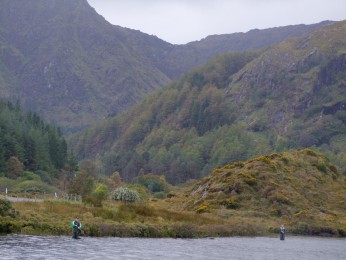
Cork City Council invites applications for 2012 for the grants under the Arts Act from groups who contribute to the creative arts or culture of Cork City. Cork City Council launched their new Arts and Cultural Strategy 2011 -2015 earlier this year and these Arts Grants are in line with the policies outlined in this strategic document. Grants are provided to a number of professional arts organisations and community and voluntary groups throughout the city area. These grants provide direct revenue funding for groups in support of their core work.
Applications should be made on the official application form, which is available from The Arts Office, T.E.A.M unit, Corporate Affairs, City Hall. Application forms are also available by email from arts@corkcity.ie. Completed application forms, accompanied by the documentation specified on the application form, should be returned to the Arts Office T.E.A.M Unit, City Hall, Cork, not later than 2pm on Friday 2nd December 2011.
Cork City Council has advertised for a multi-disciplinary consultancy team to prepare an economic proposition report for the Cork Docklands. The expertise involved will be led by Global Business, economic and financial consultants and will include Marketing & Branding, Planning, Urban Design, Engineering and Property expertise.
The purpose of this project is to deliver a report to Cork City Council on the long-term positioning of Cork Docklands as a “Location for Global Economic Investment”.
Key outputs will be:
1. A thorough economic assessment which will include the identification of the key employment sectors and functions from existing and emerging markets (indigenous and foreign).
2. Development of a branding and marketing strategy for the promotion of Docklands nationally and internationally as an investment location.
3. Consideration of key funding and financial issues associated with the rollout of the Docklands regeneration Project
4. A phased implementation strategy for an initial 5-10 year period and also for the long-term development of Docklands.
This report will build on the previous Economic Study 2007 and give an up to date recommendations on developing Cork Docklands an international location for business and economic investment.
Pat Ledwidge, Director of Services, Docklands, Cork City Council says:
“While we are experiencing poor economic conditions at present, Cork must be ready when the economy improves in the next few years. Cork Docklands is a significant asset to the city and nationally and will be a key contributor to the growth of Cork in the years to come in terms of facilitating business and economic growth for the city and the region and also providing for residential population. This report will be a key element of delivering a strategy to increase existing and bring new global business to Cork.”
This study is being co-funded by Cork City Council and the Department of the Environment, Community and Local Government.
ENDS
For further information please contact:
Pat Ledwidge or Seamus Coghlan
Docklands Directorate,
Cork City Council
on
corkdocks@corkcity.ie or 021 4964034.

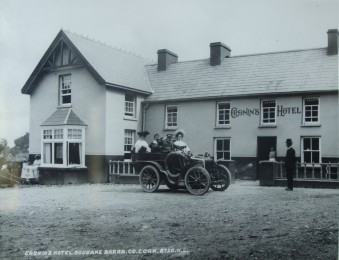
Kieran’s Our City, Our Town,
Cork Independent,
3 November 2011
In the Footsteps of St. Finbarre (Part 273)
A Stronghold of Ireland
“The silver lake between the high stony mountains seems always in motion, as befits the source of the River Lee…Gougane Barra is associated with the sound of soft, lapping water, the only sound, which, instead of breaking, rather accentuates the silence round where Finbarr’s cell stood…the island itself is one grand bouquet of light green foliage rustled by the wind, with few fir trees here and along the shore. Reeds sway near the water’s edge, in utter silence and simple loveliness, as befits a hallowed spot where the memory of a great and saintly man is still real and near” (writer called Spectator, Irish Independent, 25 September, 1940, p.4)
Continuing to explore tourism growth in Gougane Barra, the summer of 1936 coincided with the Irish Tourist Association stepping up their work to get more American parties to travel to Ireland. The Munster Express for 5 June 1936 (p.3) notes: “This year a large number of organised parties from the United States are to visit Ireland. Among the firms who are organising parties are the American travel Exchange, Frank O’Brien Travel Bureau, Maher Travel Bureau, P.J. Grimes Tourist Agency, McGovern, Synnott and Kiely Travel Bureau, and Peter Donoghue Travel Bureau. From advices received it is learned that as many as 15 parties are being organised to travel by the popular liners of the North German Llyol Co., which are regular callers at the ports of Cobh and Galway. In addition several parties are travelling on the Cunard White Star Service.”
During this period of building tourism mass, Gougane Barra was going through its own transformations. In the 1920s and 1930s, it went through another phase of clean-up of overgrowth and got a new hotel. Again the William Lawrence collection as well as the press at the time echo these changes. For example, a journalist with the Southern Star on 19 September 1925, remarking on the protection of Irish pilgrimage sites in the 1920s, notes (p.6): “Unfortunately in Ireland, however, much we may venerate our shrines, we seldom expend much trouble in their upkeep. A broken wall, rank grass, weeds seem not to matter, and even the necessary repairs to buildings are neglected so that all combine to add to a general appearance of decay. Our places of pilgrimage, therefore, compare ill with those of continental countries, where every care is taken to preserve and embellish them. Gougane Barra, though far more complete than other Irish shrines, cannot be said to have escaped from the usual neglect of our holy places…large forest trees are growing through the walls of St. Finbarr’s Hermitage; should these be uprooted by a storm, part of the ancient structure would be destroyed. The Stations of the Cross are badly damaged; many of the figures are broken and also are their handsome frames; around the cross are other missing elements. As for the little Hiberno-Romanesque chapel that gives to Gougane Barra so much of its character, it badly needs the hand of the craftsman”.
A report in the Southern Star on 24 April 1937 (p.6) reveals the increasing trade requirements of Cronin’s Hotel due to increasing tourism numbers. Cornelius Cronin, the hotel proprietor, appeared before Macroom Court applying for a new licence to trade in intoxicating liquors in the hotel premises erected by him at Gougane Barra. Judge T. Donnell, presiding, considered Gougane Barra to be a “stronghold of everything Gaelic”. The hotel was designed by Cornelius and built by direct labour under his supervision. It was noted that the traffic in the locality was increasing. There was fishing and shooting to be had there to attract visitors. Cornelius in evidence stated that he was a son of the late James Cronin. By a family arrangement in 1935, Cornelius got a portion of the holding owned by his late father. On that portion the applicant built the hotel of fourteen rooms at a cost of £2,000. On the old holding there was a hotel already and it had been there for over forty years [c.1897].
The new hotel premises were built two hundred yards away. The applicant’s brother Denis Cronin occupied the old hotel. It had come into his possession two months previous to the case. The accommodation there was not sufficient to meet the requirements of the increasing traffic and hence the reason why a new hotel was built. The brothers found they were unable to cater for all the visitors who sought accommodation. Cornelius outlined that they had regular visitors from Dublin and Cork, and visitors had begun to travel from England. Even with the two hotels they found that at times they had not enough accommodation to meet requirements. There was a course of instruction held there the previous year under the Vocational Education Scheme, which was attended by 60 teachers. Some of them stayed in the old hotel and some in the new, and some stayed in Ballingeary. The fishing and shooting rights were jointly owned by himself and his brother under an agreement. The season for visitors was about four month’s duration. For the remainder of the year, Cornelius argued there “would be very little doing in respect of licensed trade”. The application was granted.
To be continued…
Captions:
615a. Cronin’s Hotel, c.1920 (pictures: National Library, Dublin)
615b. Pilgrims and overgrowth amongst the pilgrimage cells, c.1920
